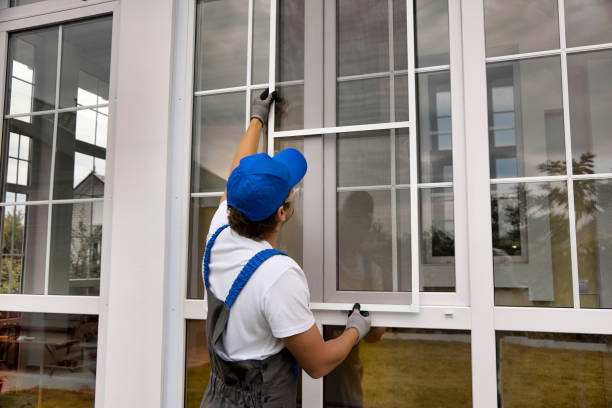From car windows to skyscraper facades, glazing technology has come a long way in the last decade. With advancements in materials, coatings, and manufacturing processes, glazing has become more durable, energy-efficient and aesthetically pleasing than ever before. In this post, we’ll explore some of the most significant improvements in commercial glazing technology over the past ten years and how they have revolutionized industries from construction to automotive. So buckle up and get ready for a journey through the fascinating world of modern-day glass!
What is Glazing?
Glazing technology has come a long way in the last decade. Newer, more energy-efficient windows are being produced that can help regulate the temperature inside your home and reduce your energy bills. There are also new types of glass that can filter out harmful UV rays, making your home more comfortable and safer for you and your family.
The Different Types of Glazing
There are three main types of glazing – clear, tinted, and reflective. Clear glazing is the most popular type and is often used in residential applications. It provides excellent clarity and UV protection but doesn’t do much to reduce heat transfer. Tinted glazing is becoming more popular as it can help reduce solar heat gain without sacrificing visibility. Reflective glazing is the most efficient type of glazing at reducing heat transfer but it can cause glare issues.
The History of Glazing
The history of glazing can be traced back to the earliest days of humanity. For centuries, people have used glazes to protect their belongings from the elements and to decorate their homes. The first glazes were made from natural materials like clay, sand, and ash. These early glazes were not very durable or waterproof, but they did a good job of protecting surfaces from the sun and wind.
Over time, people began to experiment with different materials and techniques to improve the durability and performance of glazes. In the 18th century, scientists developed new ways to make glass that was stronger and more resistant to breakage. This led to the development of stronger and more durable glazes for use in architecture and industry.
In the last decade, advances in technology have led to even more improvements in glazing products. Today, there are many different types of glazes available that offer a variety of benefits. Glazing products can now be customized to meet the specific needs of any project. Whether you need a strong and durable finish for an industrial application or a beautiful and unique finish for your home, there is a glazing product that will suit your needs.
How has Glazing Technology Improved?
In the past decade, glazing technology has improved significantly in a number of ways. One of the most notable improvements has been in the area of energy efficiency. Glazing products that are more energy efficient can help to reduce heating and cooling costs, as well as improve the overall comfort of a space.
Other significant improvements in glazing technology include increased durability, better sound insulation, and improved security features. Glazing products that are more durable and secure can help to protect against weather damage, break-ins, and other potential threats. Sound-insulating glazing can also help to create a more peaceful and comfortable environment inside a home or office building.
The Future of Glazing
As more and more homeowners are looking to improve the energy efficiency of their homes, the demand for high-performance windows and doors is on the rise. Thanks to advances in glazing technology, today’s windows and doors are better than ever at helping homes stay comfortable while saving energy.
The future of glazing technology looks even more promising, with new developments that promises even greater energy efficiency and comfort. One such development is dynamic glazing, which utilizes electrochromic or photochromic glass to automatically adjust the amount of light and heat that enters a home. This allows for optimal sunlight and temperature control, resulting in reduced heating and cooling costs.
Another exciting advance in glazing technology is transparent insulation. This innovative material is made up of microscopic glass bubbles that reflect heat back into a room, making it much easier to keep a space warm in winter and cool in summer. Transparent insulation can be applied to existing windows, making it a great retrofit option for improving energy efficiency.
These are just a few of the exciting new developments in glazing technology that are helping homes become more energy efficient. As demand for these products continue to grow, we can expect to see even more innovative ideas come to market in the coming years.
Conclusion
In conclusion, glazing technology has grown significantly over the last decade. Newer materials have enabled manufacturers to build stronger and more energy efficient windows that are now capable of providing better insulation from exterior temperatures, improved soundproofing and blocking out harmful UV rays. These advances have helped make glazed windows an even more attractive addition to any home or business. With the continued development of glazing technology, we can only expect it to get better in the years to come.

James Oliver is a professional blogger and a seasoned Content writer for technologyspell.com. With a passion for simplifying technology and digital topics, he provides valuable insights to a diverse online audience. With four years of experience, James has polished his skills as a professional blogger.




